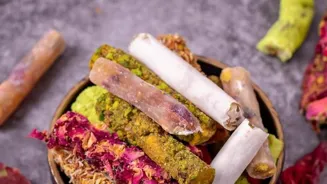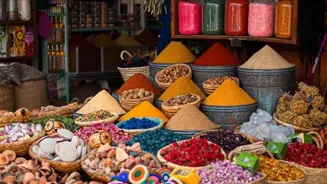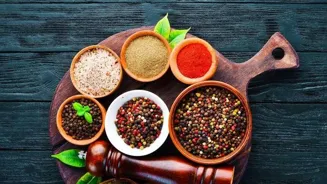National Handloom Day Special: The British Empire Struck Our Looms. We Spun Back
India’s relationship with handlooms is beyond sartorial; it's deeply political,
proudly cultural, and unshakably historic! As we celebrate National Handloom Day on August 7, it's time to revisit how India’s loom economy became a battleground of resistance during British rule and how it emerged stronger despite strong obstacles.
The Pre-Colonial Golden Thread
Before the British set foot in Indian subcontinent, it was a textile superpower. From the muslin of Bengal to the chintz of Andhra and the silks of Varanasi, Indian weavers catered to global markets through sea routes. Ships from Europe, the Middle East, and Southeast Asia carried Indian fabrics far and wide. Indian textiles weren’t just commodities; they were currency and cultural ambassadors.

Colonial Control: The Empire Strikes at the Loom
The British East India Company quickly realized the wealth potential of Indian textiles and decided to control it. Their strategy was brutally effective:
- Heavy taxes on Indian weavers
- Dismantling of local markets
- Forced imports of British mill-made goods
- Discouragement and sometimes even mutilation of Indian artisans (as per historical documents, Bengal’s weavers were allegedly punished for continuing their craft)
- The goal was very simple: destroy Indian craftsmanship and create a captive market for Britain’s industrial revolution.
The Swadeshi Stitch: How the Loom Fought Back
The British rulers underestimated the resilience of the Indian loom. By the late 19th and early 20th centuries, handloom became a symbol of self-reliance and resistance.

When Mahatma Gandhi picked up the charkha (spinning wheel), it wasn’t just about cloth—it was about economic independence and civil disobedience. That eventually led to Khadi movement across India, urging people to boycott British goods and wear only locally spun cloth. Spinning became political. The act of weaving became patriotic. A humble cotton thread became a sword of defiance.
The Cost of Swadeshi: Lives Woven Into the Fabric of Freedom
The Swadeshi Movement wasn’t just about boycotting foreign cloth; it became a battlefield where threads met blood. Thousands across India protested the influx of British mill-produced textiles by promoting and wearing khadi and handloom. Many paid a heavy price for this resistance. In places like Bengal and Punjab, peaceful protestors were often met with brutal crackdowns. Historical records suggest that during the peak of the movement in the early 1900s, hundreds lost their lives or were imprisoned for simply spinning or selling khadi. Their sacrifice helped stitch a legacy of pride and defiance into every Indian loom.

(Credit: X)
August 7 marks the day in 1905 when the Swadeshi movement was formally launched in Bengal to protest the partition. National Handloom Day isn’t just about nostalgia; it's a salute to artisans who kept the soul of India alive when everything else was being colonised.
Modern Echoes: A Loom That Never Gave In
Despite colonial attempts to uproot it, India's handloom tradition never vanished. After independence, revival movements along with government initiatives tried to restore what centuries of exploitation had tried to erase.
Today, India has more than 3 million handloom weavers, the second-largest workforce after agriculture. Whether it’s the Pochampally ikat, Chanderi silks, or Kullu woolens, the spirit of resilience lives on in every warp and weft.

How You Can Support the Movement Today
Buy Local: Choose handloom over powerloom or machine-made fast fashion.
Look for Authenticity: GI tags, Handloom Mark, and Khadi India certifications matter.
Celebrate Stories: Every piece of handloom has a tale; from the dye pots of Kutch to the looms of Assam.
The British rulers tried hard to sever the threads of our heritage, but they couldn’t untangle the pride woven into every Indian handloom.












